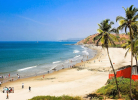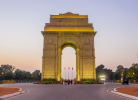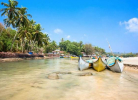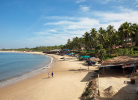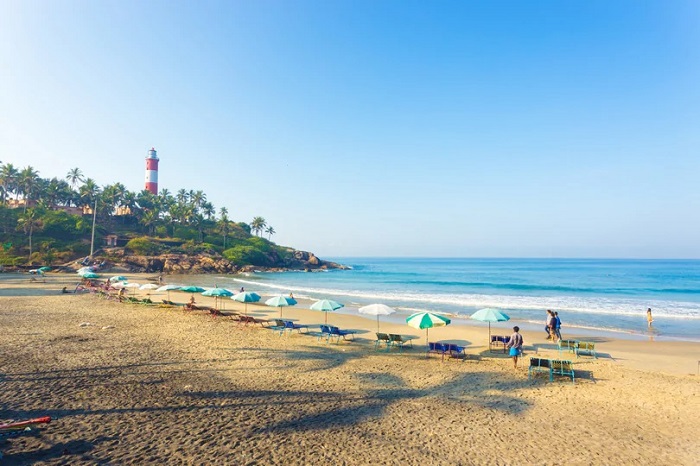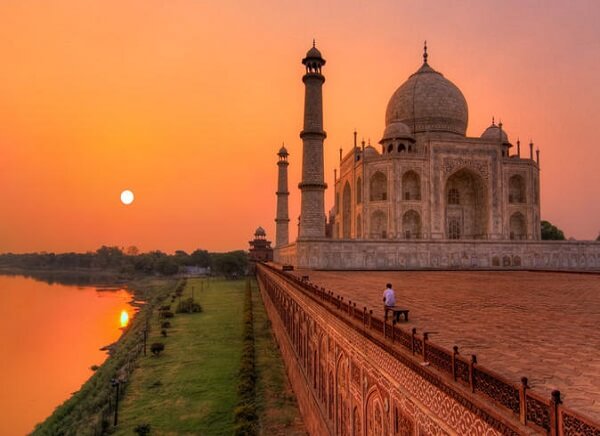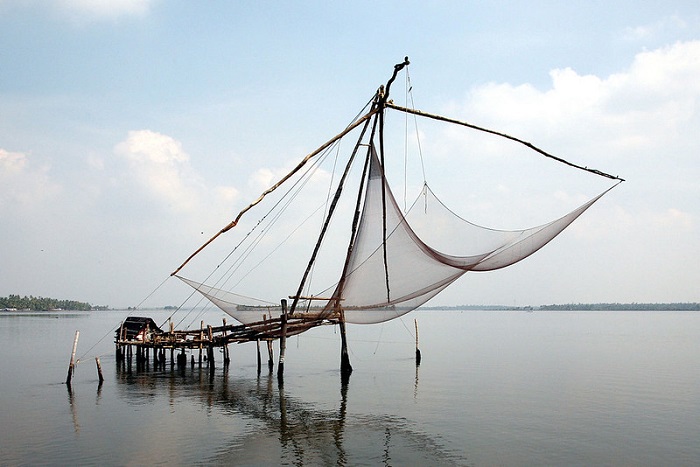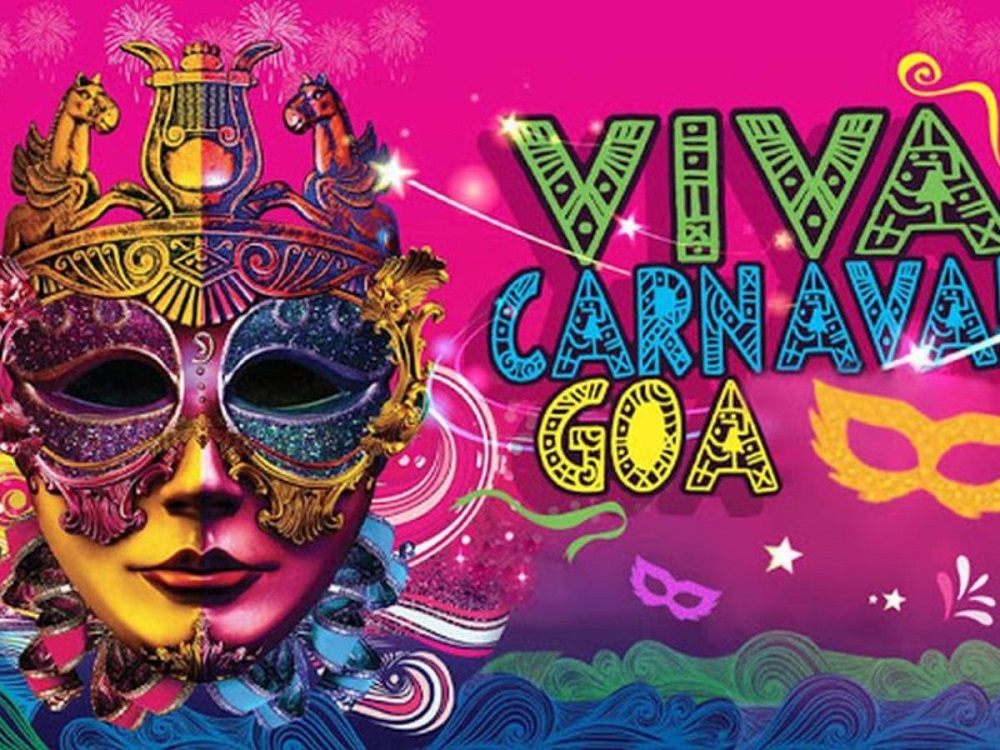Goa State Museum

-
Famous For Arts, Gallery, Sculpture, History
-
Duration of Visit 2 to 3 hours
-
Fee No Entry Fee
-
Visiting Time 9:30AM to 5:30PM
Goa State Museum or the State archeology museum is a collection of new and old articles, which throw light on the heritage, culture, and history of Goa. Starting from paintings to rare coins, you can find thousands of artifacts on display in this museum.
History of Goa State Museum
This museum was started as a unit of archives and used a rental property in 1977. Later, the government built a separate museum complex and shifted the museum to the complex in 1996. Over the years, the museum received several articles as gifts and loans from many eminent figures, academics, and other museums.
Also Read : History of Goa
Galleries in Goa State Museum
The museum contains more than 8000 exhibits and these exhibits are classified into fourteen galleries.
- Sculpture Gallery
- Numismatics Gallery
- Christian Art Gallery
- Goa’s Freedom Struggle Exhibit Gallery
- Printing History Gallery
- Menezes Braganza Work Gallery
- Banerji Art Gallery
- Furniture Gallery
- Religious Expression Gallery
- Goa Natural Heritage Gallery
- Cultural Anthropology Gallery
- Environment and Development Gallery
- Contemporary Art Gallery
- Geology Gallery
Also Read : Museums in Goa
Arts of Goa State Museum
Sculpture Gallery
This gallery holds numerous sculptures of Jainism and Hinduism. You can find sculptures made of bronze, stone and other materials. Some of the artifacts of this gallery belong to the years between the 4th and 8th centuries AD. Top sculptures of this gallery are Yakshi, Mahishasuramardini of Netravali, Silahara period sculpture, Kantadev sculpture from Navadurga temple, 11th century Vira Varma sculpture and European sculptures.
Christian Art Gallery
This galley holds sculpture, relief, busts and other Christian artworks. You can find many works from the colonial times including bust of Luis de Camoes, Afonso de Albuquerque, and others. You can also find many paintings in this gallery.
Banerji Art Gallery
The exhibits in this gallery were gifted to this museum by S K Banerji, one of the former governors of the region. Thus, the gallery holds his name. Some of the iconic exhibits in this gallery are artifacts from Indus Valley Civilization, terracotta articles, Janapadas seal, plastic-based artwork, miniature painting from Jaipur, Rajasthan, Patachirtras of Orissa, Mughal artwork and so on.
Contemporary Art Gallery
This gallery holds a lottery machine of mid-20th century, wooden lottery ball, lottery tickets, miniature paintings, sculptures and exhibits from Kala Academy.
Menezes Braganza Art Gallery
This gallery holds a collection of Goan artworks, portraits of ancient Goan political figures and others.
Cultural Anthropology Gallery
This gallery holds stones of various eras, which indicates many major events. You can find hero stones of Biravarma reign, memorial stones erectedfor naval warriors and others.
Environment And Development Gallery
This gallery holds cultural displays of many articles and items, which showcases the lifestyle of ancient villages of Goa.
Geology Gallery
This gallery contains fossils and preserved bones dating back to even 10,000 BC.
Religious Express Gallery
This gallery holds sculptures of religious importance. You can find temple chariots, idols from various ancient dynasties, traditional ritual musical instruments, scriptures, palm leaf religious articles, photographs of religious festivals and so on.
Numismatic Gallery
This gallery has a large collection of ancient Portuguese-era coins.
Furniture Gallery
This gallery holds a large collection of ancient furniture and upholstery. This includes 16th-century Portuguese furniture, the seat of the governor-general, ivory sofa, western furniture, and others.
Printing History Gallery
This gallery holds ancient printing press, plates for printing and other similar articles.
Also Read : Culture of Goa
Things to do in Goa State Museum
Walk around the museum and enjoy the emblems of culture, beauty, heritage, and religion of the land.
Get a glimpse of Portuguese influence in Goa and also exhibits about their freedom struggle.
Also Read : Top Things to do in Goa
Visiting Time of Goa State Museum
It opens from Monday to Friday at 9:30 am to 5:30 pm.
Entry Fee of Goa State Museum
No entry fee for the museum.
How to Reach Goa State Museum?
This museum is located in the Old Secretariat building, in Panjim. If you are traveling by train, the closest railway station is the Madgaon station which is 36 km away from the museum. You can find cabs from the station to the museum. If you are flying from other states of international destinations, Goa has an international airport. However, most tourists prefer flying to India via Mumbai or Delhi airport and then fly to Goa from there. You can also find buses and cabs from the airport and other major destinations in Goa to the state museum. The closest bus stand to the museum is the Panaji bus stand. From this bus stand, the museum is just 2 km away.
Also Read : How to Reach Goa
Best Time to Visit Goa State Museum
The museum is at prime beauty throughout the year. If you choose to visit Goa during the prime time, choose the winter season. Winter starts in October and ends in March. This is the pleasing time, which allows you to explore the region with ease as the temperature and humidity will be moderate. Summers (March to June) are quite humid and hot and monsoon (July and August) receives heavy rainfall making sightseeing, a little clumsy and uncomfortable.
Also Read : Best Time to Visit Goa


